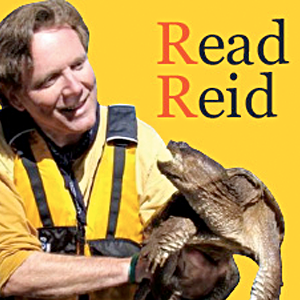
Exploring The Last Green Valley: The brown-headed cowbird is a parasite with wings
Bird nesting season has arrived. Migratory birds have returned and, along with our year-round birds, are actively seeking nesting territories, attracting mates, building nests, laying eggs and rearing young.
Every bird builds a nest characteristic of its species. Bald eagle nests are built of large sticks and branches, can be more than six feet in diameter and located high in a tall tree. Killdeer lay their eggs on bare ground along river banks and lake shores. Baltimore orioles create beautifully woven pendulous nests that hang from thin branches high in a tree. Woodpeckers use their sharp beaks to chisel a cavity in a tree and build their nest inside.
There is one species, the brown-headed cowbird, who doesn’t bother to build a nest. Cowbirds prefer instead to lay their eggs in the nests of other birds, leaving the unwitting host birds to raise the cowbird chicks. It is the most common and widespread “brood parasite” in North America.
Last month, as the early migrating birds were returning to my neighborhood, I saw a few brown-headed cowbirds on my lawn enjoying the company of a flock of starlings. I thought I would share a bit about this species with the obnoxious habits of a very bad house guest.
The male brown-headed cowbird is easy to spot with its distinctive brown head contrasting with a green and black, almost metallic-colored body. The female is gray-brown, and both are about 7.5-inches long. They are frequently seen foraging on the ground for insects with their tail cocked up.
The song of the male is a squeaky gurgling and its calls include a harsh rattle and squeaky whistles. During the non-breeding time of year, cowbirds can be seen in flocks of blackbirds and starlings.
Cowbirds are native to the United States and are found in grasslands as well as open farmland, urban and suburban gardens and lawn habitats. They prefer areas where cattle or horse-disturbed soil is available for feeding on ground insects. Historically, they followed bison herds and fed on the insects and bugs kicked up by the passing herds.
It is speculated that this association with moving herds of bison may be why the cowbird developed the breeding strategy of parasitism. Perhaps it was leaving their eggs in the nests of other birds that allowed them to keep up with moving herds, or they were able to follow the herds because their breeding instincts gave them the freedom to do so.
The 18th- and 19th-century cutting of the eastern forest for expansion of agricultural lands led the cowbird to expand eastward beyond its original range of plains and prairie. By mid-19th century, Connecticut was 80 percent cleared land — predominately field and pasture for livestock — perfect cowbird habitat. It is also believed this expansion provided the cowbird with access to bird species which had not developed defensive strategies against cowbird parasitism.
During the nesting season the female cowbird will search out female birds of other species who are laying eggs. Once a suitable host is found it will sneak into the nest when the other bird is away, remove one or more eggs and lay its own egg for the unsuspecting host to incubate, hatch and raise as its own.
The cowbird has evolved to require a shorter incubation period than most other birds, and they usually hatch before the other eggs in the nest. Cowbird chicks are also fast growers and quickly outpace nest mates in size and food demands. Unfortunately, their nest mates suffer for this as the larger cowbird chick frequently pushes the smaller chicks from the nest. The result is a lack of fledgling success for the host species foster parents.
The brown-headed cowbird has been known to use the nest of more than 200 species of birds, and research has shown most individual females will focus on one host species. Thankfully, some birds such as the American robin and catbird recognized the “strange” eggs in the nest and remove them. Smaller birds such as the yellow warbler don’t have a large enough beak to pick up the larger cowbird egg and instead opt to build a new nest on top of the cowbird egg.
My house in Putnam has perfect habitat for the brown-headed cowbird. Most of our land is in pasture and fields with edge forests of deciduous trees and some conifers. We also have horses, and, like bison and other large hooved animals, they kick up insects as they roam the back pasture and field.
While I don’t like the parasitic nesting characteristics of the cowbird, they are not an invasive species like the house sparrow and starling, and as birds native to North America they are protected under the migratory bird act. I usually don’t venture through brush and bush seeking bird nests, but it sure is tempting to look for nests and see how many cowbird eggs I can find, especially since I know we have them on our property.
We live in a beautiful place called The Last Green Valley. Our local flora and fauna can amaze and inspire us each and every day. I hope you’ll join me as we care for, enjoy and pass it on.
Information for this column was gleaned from the “Peterson Field Guide to Birds’ Nests,” “Secrets of the Nest: The life of North American Birds,” by Joan Dunning, “National Geographic Field Guide to North American Birds,” and the All About Birds website maintained by the Cornell Lab for Ornithology.
Bill Reid is chief ranger for The Last Green Valley National Heritage Corridor and has lived in the region for more than 35 years. He can be reached at bill@tlgv.org.
Get Connected
Sign up for our newsletter
"*" indicates required fields



